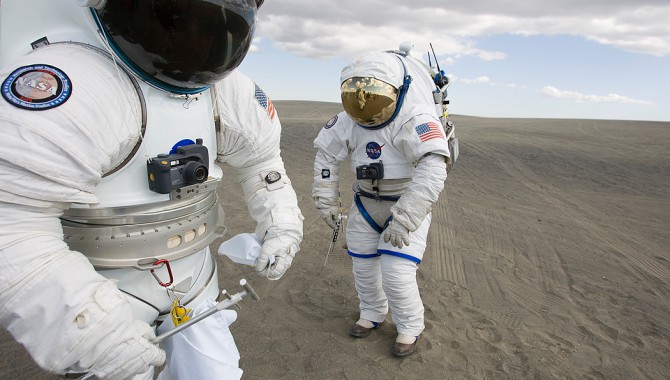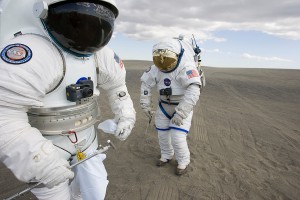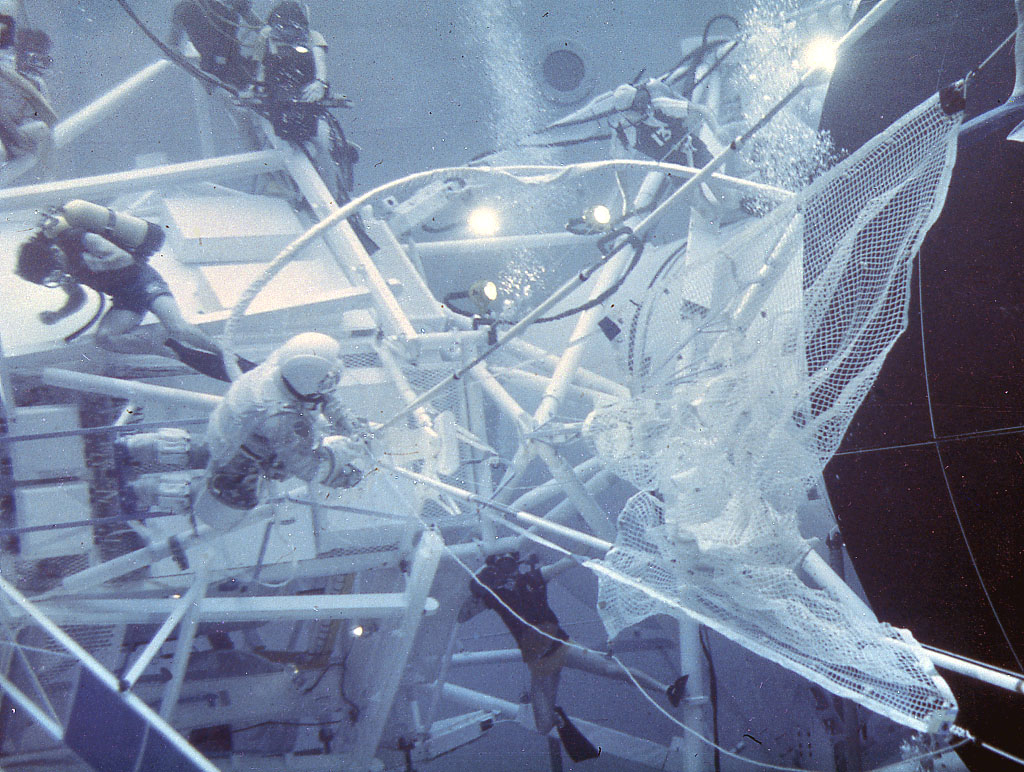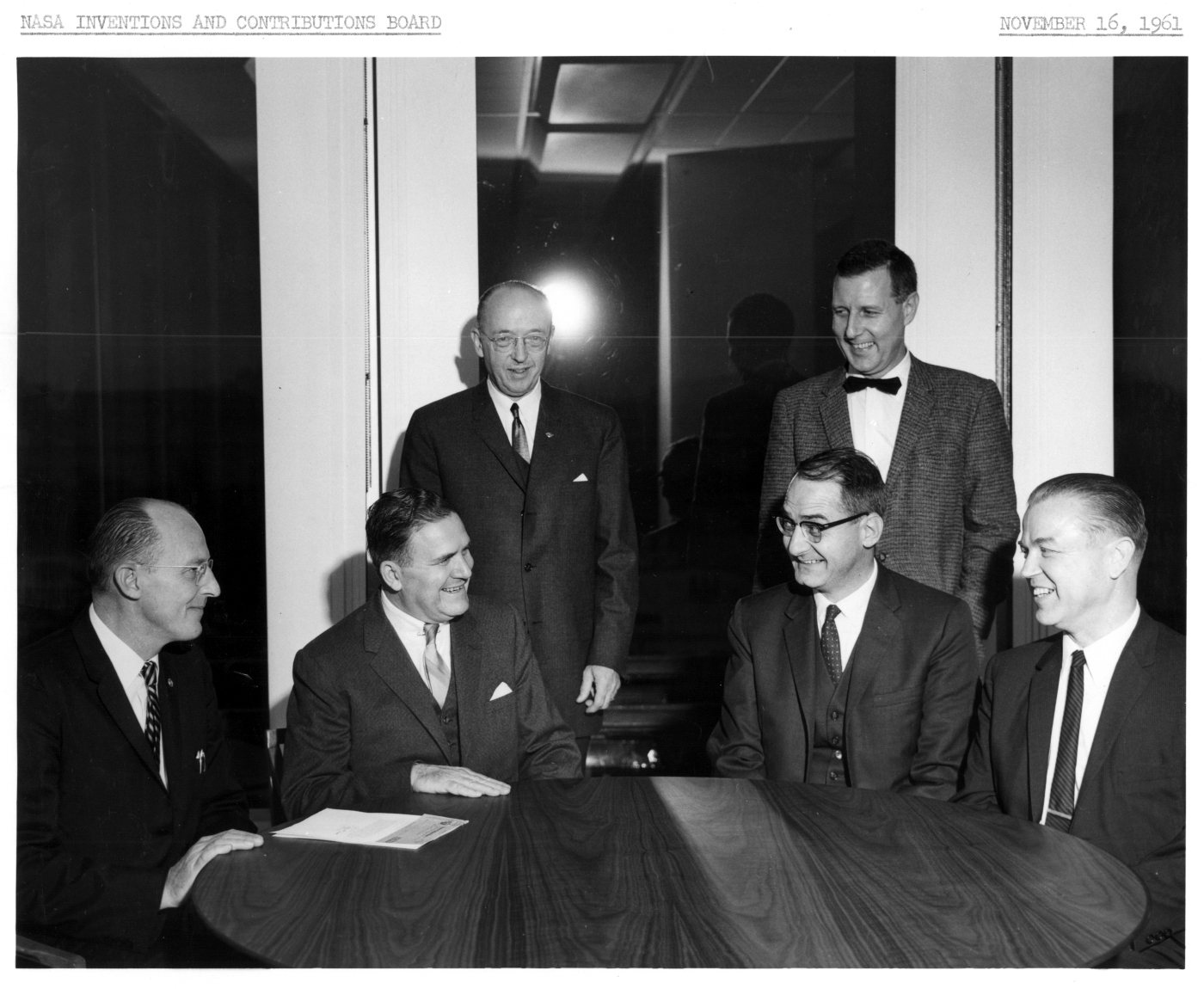
By Laurence R. Young
So we are going back to the moon, this time with more people staying for longer periods. The lunar outpost has been envisioned as a substantial home base—if not a settlement—to house and supply astronauts as they explore the lunar surface. It needs to be more than that. Since one of the principle arguments in the Vision for Space Exploration is to use the moon to prepare for further exploration of the solar system (read Mars), we should be planning how to take advantage of this new opportunity. If we concentrate our efforts solely on maintaining the health and safety of the crew, we will miss out on a unique chance to understand the challenges to human survival on Mars.

At Moses Lake, Washington, in June, astronauts, engineers, and scientists wore demonstration spacesuits, drove prototype rovers, and simulated scientific work to test some of the tasks that NASA studies have identified as possible in future lunar exploration.
Photo Credit: NASA
The major issues in reduced gravity are well known from our experiences in orbit from Skylab and Spacelab through Mir and the International Space Station. Bones lose strength and size when deprived of the regular compressive forces associated with walking, and muscles atrophy when no longer required to support body weight. The cardiovascular system, which regulates blood pressure, volume, and flow, is no longer challenged by “standing up,” and we are likely to faint when standing erect back on Earth. Posture is disturbed by the absence of a steady pull on the vestibular organs that regulate balance. The open question for us is the extent to which such potentially hazardous disruptions would also be present in the partial gravity of Mars, with its attractive force only threeeighths that of Earth.
One might conjecture a linear relationship for physiological parameters, between the values at 1 g (Earth gravity) and those at 0 g, making it simple to predict the results at 3/8 g. But biological processes are almost never linear. Doubling the input rarely doubles the output. Instead, we commonly see thresholds, saturations, hysteresis (or lagging effects), and other non-linearities, which make it folly to imagine we can predict effects between those two values. However, if we can insert reliable measurements at some third g level between 0 and 1, we might better be able to predict the physiological effects of gravity throughout the range. If we add measurements of human deconditioning at lunar gravity (1/6 g) to our existing 0 g and 1 g data, we will be in a much better position to anticipate the experience of 3/8 g. Our outpost on the moon will present exactly that opportunity. All that will be required is a well-equipped lunar laboratory, along with careful scientific protocols and the commitment of astronauts to adhere to the testing requirements.
For example, bone density and imaging, muscle size and strength, cardiovascular regulation, and postural stability would need to be measured periodically during a stay of three to six months on the surface. Exercise and other countermeasures would need to be specified and monitored. Extravehicular activity in particular would need to be recorded and monitored to see whether the exercise associated with work in a pressure suit alone would provide sufficient protection, and a control group would eventually be required as well. The lunar laboratory would provide invaluable information, not only about the ability to survive the challenges of living on the moon, but also about the likely difficulty of living in Martian gravity.
If it turns out that simply living and working at lunar gravity is sufficient to maintain fitness, then we can be confident that Martian gravity will be similarly adequate, and no special countermeasures will be called for on Mars. On the other hand, if living at 1/6 g produces bodily deconditioning like that seen at 0 g in orbit, then we probably should prepare a range of countermeasures to assist our Martian explorers during their stay on the planet. The lunar outpost can be a true space laboratory and offer a unique opportunity to learn how to protect human beings as we venture into the solar system.
About the Author
 |
Laurence R. Young is the Apollo Program professor of astronautics and professor of health sciences and technology at the Massachusetts Institute of Technology. |








